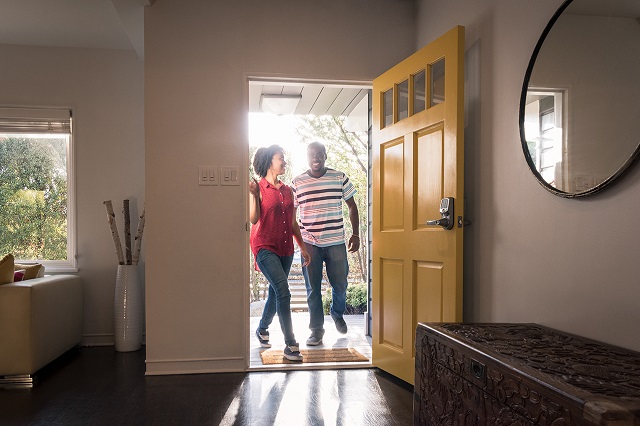If you’re in the market for a new home, you’ve surely learned that the real estate landscape can drastically change in just a moment’s notice. Not long ago, houses would list and sell within days. Experts say that those days are behind us.
Financing a home has become costlier and buyers have become more cautious. With home sales slowing, many sellers have had to endure weeks and in some cases months of waiting as their properties sit on the market.
As of March 2024, the 30-year fixed rate mortgage (FRM) averages around 6.67%, according to Freddie Mac. To put it into perspective, the average 30-year FRM lingered around 3-4% ten years ago. While still high, it is an improvement from late October 2022, when the average rate was listed at at 7.08%, the highest in 20 years and more than double what it was at the same time the previous year. The spike led many potential homebuyers to hold off, lowering demand and pushing home prices down.
Despite the dark clouds facing homebuyers, an increasingly popular mortgage tool called a temporary buydown mortgage may be the silver lining. Steve Vieira, AAA Northeast’s director of mortgage operations and sales, says 2-1 and 1-0 options are “worth exploring and possibly beneficial for the seller and the buyer.”
How Does a Temporary 2-1 or 1-0 Buydown Mortgage Work?
“The first thing to be aware of is that the temporary buydown mortgage involves a cooperative seller,” Vieira said. “Before a qualified buyer locks in a fixed rate 30-year mortgage, the buyer or their realtor can approach the seller of the home or builder and negotiate a temporary buydown 2-1, or 1-0 mortgage.”
As its name suggests, a 2-1, or 1-0 temporary buydown mortgage allows the buyer to ease into their full fixed-rate mortgage fee. In a 2-1 mortgage, the first year of the buyer’s monthly payment is 2% less than the fixed rate. In the second year, the payment bumps up by 1% point. When the third year begins, the full fixed rate takes effect and remains for the duration of the loan. In a 1-0 buydown, the mortgage rate is 1% lower in the first year before increasing to the full rate in year two.
In each case, at closing, the seller pays the difference between the percentage points by depositing a lump sum cash deposit into an escrow account that is tied to the mortgage. Each time that the buyer makes a monthly payment, a withdrawal is made from the escrow account that brings the temporarily reduced payment up to the full loan rate.

Temporary Buydowns by the Numbers
When describing the benefits of a temporary buydown mortgage for a buyer, Vieira offered this example of a Northeast couple, buying a home with a 7% fixed $250,000, 30-year, 2-1 mortgage. This is how the numbers would play out for the buyers:
- At closing, the seller or the home builder makes a $5,831.88, lump sum cash deposit into an escrow account that is tied to the buyer’s mortgage. This cash deposit equals the difference in the interest costs between the temporary buydown rate and the note rate.
- The buyer’s full 7% monthly mortgage payment, including interest, is $1,663.46.
- For the first two years of the loan, the buyers make monthly graduated loan payments.
- In year one, the buyers make their 5% monthly mortgage payments of $1,342.05.
- In year two, the buyer’s interest payments increase to 6% and their mortgage payments increase to $1,498.88 per month.
- In the third year, the buyers pay the full 7% payment of $1,663.46. They continue to pay 7% for the life of the loan.
- During the first year of their temporary buy down mortgage, the buyers saved $3,856.92
- During the second year of their mortgage, they saved $1,974.96
- The buyers total two-year savings equals $5,831.88, the same amount that the seller deposited into the escrow account at the time of the sale.
Benefits for Sellers and Buyers
As an increasing number of houses linger on the market for longer periods of time, the seller benefits by closing the sale in less time. Taking part in the temporary buydown mortgage may also save the seller money over time. It could result in a far lower expenditure than what it would cost to slash the sale price on the home. Time is money in real estate. If the house sits on the market for weeks or months, the seller may be forced to drop the price by significantly more than the temporary buydown escrow payment.
The buyers, meanwhile, can use the extra cash to purchase new furnishings, update their new house and take care of other expenses that come with a move. The house sells and the seller turns over the keys to the new owners.
Learn more about AAA’s temporary buydown mortgage program and how it can potentially save you thousands of dollars on your next home purchase.
*Disclaimer: All loans offered through AAA Northeast Bank. NMLS # 179871, AAA New Jersey Division Financial Services Inc. NMLS # 2495543 110 Royal Little Drive Providence RI 02904 (800) 446-6997. Licensed by the N.J. Department of Banking and Insurance. MORTGAGE BROKER ONLY, NOT A MORTGAGE LENDER OR MORTGAGE CORRESPONDENT LENDER. “We arrange but do not make loans.” Other rates and terms available. Rates and terms subject to change without notice. Some restrictions apply. All loans are subject to credit approval, appraisal and satisfactory title examination where applicable. Consult your tax advisor regarding the tax deductibility of interest. Other rates and terms available. Counseling may be required.














